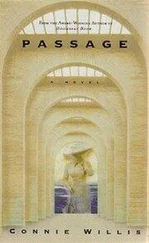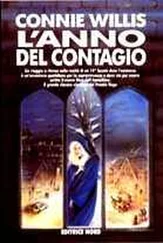“What about the Amblers?” I said.
“Their name is Ambler, believe it or not. I ran a lifeline on them. He was a welder. She was a bank teller. No kids. They’ve been doing this since eighty-nine when he retired. Nineteen years. David, are you using the eisenstadt?”
We had been through this the last three times I’d been on a shoot. “I’m not there yet,” I said.
“Well, I want you to use it at the governor’s conference. Set it on his desk if you can.”
I intended to set it on a desk, all right. One of the desks at the back, and let it get some nice shots of the rear ends of reporters as they reached wildly for a little clear airspace to shoot their pictures in, some of them holding their vidcams in their upstretched arms and aiming them in what they hope is the right direction because they can’t see the governor at all, or let it get a nice shot of one of the reporter’s arms as he knocked it facedown on the desk.
“This one’s a new model. It’s got a trigger. It’s set for faces, full-lengths, and vehicles.”
So great. I come home with a hundred-frame cartridge full of passersby and tricycles. How the hell did it know when to click the shutter or which one was the governor in a press conference of eight hundred people, full-length or face? It was supposed to have all kinds of fancy light-metrics and computer-composition features, but all it could really do was mindlessly snap whatever passed in front of its idiot lens, just like the highway speed cameras.
It had probably been designed by the same government types who’d put the highway cameras along the road instead of overhead so that all it takes is a little speed to reduce the new side license plates to a blur, and people go faster than ever. A great camera, the eisenstadt. I could hardly wait to use it.
“Sun-co’s very interested in the eisenstadt,” Ramirez said. She didn’t say good-bye. She never does. She just stops talking and then starts up again later. I looked back in the direction of the jackal.
The multiway was completely deserted. New cars and singles don’t use the undivided multiways much, even during rush hours. Too many of the little cars have been squashed by tankers. Usually there are at least a few obsoletes and renegade semis taking advantage of the Patrol’s being on the divideds, but there wasn’t anybody at all.
I got back in the car and backed up even with the jackal. I turned off the ignition but didn’t get out. I could see the trickle of blood from its mouth from here. A tanker went roaring past out of nowhere, trying to beat the cameras, straddling the three middle lanes and crushing the jackal’s rear half to a bloody mush. It was a good thing I hadn’t been trying to cross the road. He never would have even seen me.
I started the car and drove to the nearest off-ramp to find a phone. There was one at an old 7-Eleven on McDowell.
“I’m calling to report a dead animal on the road,” I told the woman who answered the Society’s phone.
“Name and number?”
“It’s a jackal,” I said. “It’s between Thirtieth and Thirty-second on Van Buren. It’s in the far right lane.”
“Did you render emergency assistance?”
“There was no assistance to be rendered. It was dead.”
“Did you move the animal to the side of the road?”
“No.”
“Why not?” she said, her tone suddenly sharper, more alert.
Because I thought it was a dog. “I didn’t have a shovel,” I said, and hung up.
I got out to Tempe by eight-thirty, in spite of the fact that every tanker in the state suddenly decided to take Van Buren. I got pushed out onto the shoulder and drove on that most of the way.
The Winnebago was set up in the fairgrounds between Phoenix and Tempe, next to the old zoo. The flyer had said they would be open from nine to nine, and I had wanted to get most of my pictures before they opened, but it was already a quarter to nine, and even if there were no cars in the dusty parking lot, I was probably too late.
It’s a tough job being a photographer. The minute most people see a camera, their real faces close like a shutter in too much light, and all that’s left is their camera face, their public face. It’s a smiling face, except for Saudi terrorists and senators, but, smiling or not, it shows no real emotion. Actors, politicians, people who have their picture taken all the time are the worst. The longer the person’s been in the public eye, the easier it is for me to get great vidcam footage and the harder it is to get anything approaching a real photograph, and the Amblers had been at this for nearly twenty years. By a quarter to nine they would already have their camera faces on.
I parked down at the foot of the hill next to the clump of ocotillos and yucca where the zoo sign had been, pulled my Nikon longshot out of the mess in the backseat, and took some shots of the sign they’d set up by the multiway: See a Genuine Winnebago. One-Hundred Percent Authentic.
The Genuine Winnebago was parked longways against the stone banks of cactus and palms at the front of the zoo. Ramirez had said it wasn’t a real Winnebago, but it had the identifying W with its extending stripes running the length of the RV, and it seemed to me to be the right shape, though I hadn’t seen one in at least ten years.
I was probably the wrong person for this story. I had never had any great love for RVs, and my first thought when Ramirez called with the assignment was that there are some things that should be extinct, like mosquitoes and lane dividers, and RVs are right at the top of the list. They had been everywhere in the mountains when I’d lived in Colorado, crawling along in the left-hand lane, taking up two lanes even in the days when a lane was fifteen feet wide, with a train of cursing cars behind them.
I’d been behind one on Independence Pass that had stopped cold while a ten-year-old got out to take pictures of the scenery with an Instamatic, and one of them had tried to take the curve in front of my house and ended up in my ditch, looking like a beached whale. But that was always a bad curve.
An old man in an ironed short-sleeved shirt came out the side door and around to the front end and began washing the Winnebago with a sponge and a bucket. I wondered where he had gotten the water. According to Ramirez’s advance work, which she’d sent me over the modem about the Winnebago, it had maybe a fifty-gallon water tank, tops, which is barely enough for drinking water, a shower, and maybe washing a dish or two, and there certainly weren’t any hookups here at the zoo, but he was swilling water onto the front bumper and even over the tires as if he had more than enough.
I took a few shots of the RV standing in the huge expanse of parking lot and then hit the longshot to full for a picture of the old man working on the bumper. He had large reddish-brown freckles on his arms and the top of his bald head, and he scrubbed away at the bumper with a vengeance.
After a minute he stopped and stepped back, and then called to his wife. He looked worried, or maybe just crabby. I was too far away to tell if he had snapped out her name impatiently or simply called her to come and look, and I couldn’t see his face. She opened the metal side door, with its narrow louvered window, and stepped down onto the metal step.
The old man asked her something, and she, still standing on the step, looked out toward the multiway and shook her head, and then came around to the front, wiping her hands on a dish towel, and they both stood there looking at his handiwork.
They were One-Hundred Percent Authentic, even if the Winnebago wasn’t, down to her flowered blouse and polyester slacks, probably also One-Hundred Percent, and the cross-stitched rooster on the dish towel. She had on brown leather slip-ons like I remembered my grandmother wearing, and I was willing to bet she had set her thinning white hair on bobby pins.
Читать дальше












